Managing a business in today’s complex regulatory landscape demands more than operational efficiency and innovation. Organizations must also address risks, meet compliance obligations, and align their actions with overarching governance practices. This is where enterprise governance risk and compliance (GRC) comes in—a holistic approach to managing these interconnected priorities.
In this blog post, we’ll explore what enterprise GRC is, why it matters, and how businesses can implement a robust strategy to reliably achieve their objectives while navigating uncertainty.
What is enterprise governance, risk, and compliance?
The Open Compliance and Ethics Group (OCEG) coined the term GRC in 2007, defining it as “the integrated collection of capabilities that enable an organization to reliably achieve objectives, address uncertainty, and act with integrity.” This definition underscores the interconnectedness of governance, risk, and compliance functions in driving sustainable business success.
At its core, enterprise GRC represents a unified strategy for managing these essential processes. Instead of treating governance, risk management, and compliance as separate silos, GRC integrates them into a cohesive system to promote transparency, efficiency, and accountability across all organizational levels.
The pillars of enterprise GRC
Enterprise GRC is built on three interconnected pillars—governance, risk management, and compliance. Each plays a vital role in ensuring organizations operate efficiently, address uncertainty, and maintain integrity while pursuing business objectives.
Governance
Governance ensures that an organization’s decisions, policies, and practices align with its organizational objectives and ethical standards. It establishes accountability, defines roles, and provides the framework for effective leadership.
Risk management
An effective risk management process involves identifying, evaluating, and mitigating potential threats that could disrupt operations, harm stakeholders, or prevent the achievement of business objectives. This includes risks like cyberattacks, operational failures, and market volatility.
Compliance
Compliance focuses on adhering to all relevant legal and regulatory requirements, internal policies, and industry standards. It ensures that an organization operates within the law while protecting its reputation and avoiding penalties.
Common GRC frameworks
Organizations often turn to established GRC frameworks to guide their implementation and ensure consistency across their GRC processes. Some of the most widely used frameworks include:
- ISO 27001: A widely used standard for information security management, offering best practices to safeguard sensitive data and prevent breaches
- NIST Cybersecurity Framework (CSF): Designed to help organizations improve their ability to identify, protect, detect, respond to, and recover from cyber risks
- COSO (Committee of Sponsoring Organizations): Provides guidance on internal controls, enterprise risk management, and fraud deterrence to enhance governance and reduce risks
- COBIT (Control Objectives for Information and Related Technologies): Focuses on IT governance and management, helping organizations align their IT capabilities with broader business objectives
- OCEG GRC Capability Model: A comprehensive model that integrates governance, risk, and compliance capabilities, emphasizing continuous improvement and adaptability
Roles and responsibilities in GRC
Successful GRC programs depend on clearly defined roles and responsibilities across the organization. While accountability starts with senior leadership, effective GRC relies on contributions from every level:
- Board of Directors: Oversees governance and approves strategic decisions
- CEO: Ensures GRC efforts are adequately resourced and aligned with the company’s goals
- Chief Risk Officer (CRO): Leads enterprise risk management and reporting
- Chief Compliance Officer (CCO): Manages compliance initiatives and employee training
- Chief Information Officer (CIO) or Chief Technology Officer (CTO): Oversees GRC tools for technology, data security, and compliance
- Chief Information Security Officer (CISO): Responsible for the overall security of an organization’s information systems.
- Data Protection Officer (DPO): Ensures, in an independent manner, that an organization applies the laws protecting individuals’ personal data.
- Department heads: Implement GRC processes within their teams
- Employees: Adhere to policies and report potential risks
Cross-functional teams may also be formed to address specific GRC initiatives, combining expertise from various departments.
Five benefits of enterprise GRC
An effective enterprise GRC program delivers transformative benefits for medium and large businesses, aligning governance, risk, and compliance efforts into a cohesive framework. These advantages extend beyond compliance, driving better decision-making, operational efficiency, and stakeholder trust.
1. Improved decision-making
With real-time insights into risks, compliance challenges, and organizational vulnerabilities, enterprise GRC empowers leadership to make informed, strategic decisions. This visibility allows businesses to anticipate potential issues, allocate resources effectively, and seize opportunities with confidence.
2. Streamlined compliance management
By automating compliance workflows and standardizing processes, enterprise GRC simplifies the task of meeting complex regulatory requirements. This automation reduces the manual workload on compliance teams, minimizes errors, and ensures consistent adherence to both industry standards and legal obligations.
3. Enhanced operational efficiency
Enterprise GRC eliminates silos by integrating governance, risk, and compliance efforts across departments. This improved efficiency reduces redundancies, simplifies business processes, and ensures that teams work collaboratively toward shared organizational objectives, improving overall productivity.
4. Proactive risk mitigation
A robust GRC framework enables organizations to identify and manage risk before it escalates. By embedding risk assessment into daily operations, businesses can reduce vulnerabilities, avoid costly disruptions, and maintain continuity even during periods of uncertainty.
5. Increased stakeholder confidence
A well-executed GRC program demonstrates a company’s commitment to ethical practices, transparency, and accountability. This inspires confidence among investors, regulators, and customers, reinforcing the organization’s reputation as a trustworthy partner in its industry.
With these benefits, an effective GRC program is not just about meeting compliance obligations; it’s a strategic tool for achieving resilience, building trust, and driving sustainable success.
Challenges in implementing GRC
While enterprise GRC offers significant benefits, implementing a robust GRC framework comes with its own challenges.
The complexity of regulatory compliance
The constantly evolving landscape of regulatory requirements makes compliance an ongoing challenge. Businesses must keep up with new laws, industry standards, and jurisdictional variations, which can be resource-intensive and overwhelming without the right GRC processes in place.
Siloed data and systems
Organizations often struggle to integrate siloed data and disconnected systems across departments. This fragmentation can hinder collaboration, delay decision-making, and reduce the effectiveness of GRC tools. A unified GRC system is essential to breaking down these silos and enabling a centralized view of risks and compliance.
Cultural resistance
Building a strong GRC program requires buy-in from employees at all levels, yet cultural resistance is a common barrier. Some key stakeholders may perceive GRC initiatives as overly bureaucratic or unnecessary, making it challenging to align efforts and ensure participation. Leadership must foster a culture that prioritizes governance practices and supports compliance efforts.
Resource constraints
Implementing and maintaining a comprehensive GRC framework requires significant investment in time, technology, and expertise. For many organizations, balancing these resource demands with the expected ROI of a strong GRC strategy is a critical challenge, especially when budgets are tight or competing priorities arise.
Good news: Organizations can turn to GRC software to support their governance, risk, and compliance efforts. These solutions help streamline the process, making it easier to navigate regulatory complexities, integrate data, overcome cultural resistance, and manage resources effectively. With the right GRC tools, businesses can transform challenges into opportunities for growth, efficiency, and resilience.
Enterprise GRC software: The backbone of modern governance
Modern GRC software integrates a variety of critical functions into one platform, making it easier for organizations to maintain control and improve operational efficiency.
With GRC software, organizations can:
- Automate compliance management: GRC tools help organizations stay ahead of regulatory changes and ensure they meet compliance requirements. By automating crucial tasks like policy tracking, document management, and reporting, these platforms significantly reduce the manual effort involved in compliance and minimize the risk of human error.
- Provide a centralized data repository for integrated GRC activities: One of the biggest challenges organizations face is managing data across various systems and silos. GRC software creates a unified repository for all relevant data—compliance logs, risk assessments, incident reports, and audit results—giving decision-makers and stakeholders a single source of truth that enhances visibility, accountability, and collaboration.
- Facilitate risk mitigation and incident response: GRC tools help identify, assess, and manage risks before they escalate into significant issues. With features like real-time risk monitoring, analytics, and automated incident response workflows, these platforms enable organizations to take immediate action when risks or incidents arise, helping to reduce the potential for financial losses, reputational damage, or regulatory penalties.
- Enable real-time reporting and dashboards for decision-making: The ability to access real-time, data-driven insights is invaluable for leaders who need to make informed decisions quickly. GRC software offers robust reporting tools and customizable dashboards, which enable stakeholders at all levels to monitor risk exposure, track compliance performance, and gauge the effectiveness of governance strategies in real time.
Nine things to look for in enterprise GRC software
Features of GRC software that enhance governance, risk, and compliance
GRC software isn’t just a tool for managing risks and compliance—it’s an all-encompassing platform that integrates multiple functions designed to streamline and improve an organization’s overall risk management efforts. Here are nine key features you should look for in a GRC solution:
1. Policy management
Policy management is a cornerstone of any robust GRC software solution. This feature ensures that policies are consistently developed, updated, communicated, and enforced across the organization. Automated workflows allow for timely policy distribution and updates, reducing manual errors and ensuring compliance across departments. Continuous tracking and reporting features help monitor adherence and measure policy effectiveness, providing a clear view of compliance across the organization.
2. Enterprise risk management
Effective enterprise risk management is at the heart of GRC software. The platform enables organizations to conduct thorough risk assessments, identify potential threats, and implement mitigation strategies. Using advanced analytics and AI, the software continuously monitors risk factors and highlights emerging threats in real-time. By identifying risks early, organizations can proactively address vulnerabilities and strengthen their risk management frameworks before issues escalate.
3. Compliance management
With constantly evolving regulations, compliance management has become more challenging than ever. GRC software centralizes compliance efforts, automating routine tasks like reporting, document management, and policy updates. Continuous monitoring ensures compliance is maintained, and the integration of AI helps quickly identify non-compliance risks, enabling rapid response to regulatory changes.
4. Incident management
When it comes to risk management, quick and efficient incident response is essential. GRC software supports incident management by providing tools to log, track, and resolve incidents efficiently. Real-time analytics and AI-powered alerts help organizations respond to incidents quickly, minimizing their impact. The software also tracks the lifecycle of incidents from detection to resolution, helping organizations learn from past events and strengthen their risk management practices.
5. Audit management
Audits—whether internal or external—are integral to ensuring compliance and assessing risk. GRC software simplifies audit management by automating workflows, centralizing documentation, and providing real-time audit tracking. This reduces the time spent on audits and helps identify high-risk areas that require deeper scrutiny. By using AI to predict potential compliance issues, GRC tools enable organizations to resolve problems before audits take place, ensuring smoother audit cycles and better compliance outcomes.
6. Reporting and analytics
Data-driven decision-making is a critical component of successful GRC management. GRC software provides comprehensive reporting and analytics capabilities, enabling organizations to assess the effectiveness of their risk management strategies. Predictive analytics powered by AI can help foresee potential compliance risks, while real-time reporting allows decision-makers to act quickly and strategically. Customizable dashboards make it easy to visualize performance metrics and track progress across multiple GRC dimensions.
7. A clean user experience
A user-friendly interface is essential for ensuring quick adoption across your organization. A well-designed GRC software platform will reduce the learning curve, making it easier for employees to navigate and integrate into their daily routines. A cumbersome interface can hinder the software’s effectiveness, making it harder for users to engage fully with the platform.
8. Integrations
For GRC software to be truly effective, it must integrate seamlessly with your existing technology stack. Integrations should include ERP systems, CRM platforms, security tools, and more. Efficient integrations streamline workflows, reduce manual data entry, and improve the overall effectiveness of your governance and compliance processes.
9. A proven track record
It is crucial to choose a vendor with a solid track record and strong reputation in the GRC industry. Established vendors are more likely to provide reliable products and responsive customer support, ensuring that your GRC efforts remain effective in the long term.
With GRC software in place, organizations are equipped to manage their governance, risk, and compliance processes more effectively than ever before. This reduces overhead, improves decision-making, and maintains the agility needed to respond to an ever-changing regulatory landscape. Whether you’re focused on compliance, risk mitigation, or incident management, the right GRC software can be a game-changer for your organization.
How Thoropass stands apart
Thoropass offers key features such as managing 100% of audits within the platform and ensuring compliance with frameworks like SOC 2 and GDPR. This comprehensive platform is designed to assist organizations with compliance and audit requirements, making it a top choice for many businesses.
Integrating these tasks within one system makes the process more straightforward, allowing for an efficient means of fulfilling regulatory mandates. Thoropass assists companies in conforming to multiple standards, such as SOC 2, ISO 27001, PCI DSS, HITRUST, HIPAA, and GDPR.
- Achieving compliance faster: Thoropass enables organizations to expedite their compliance process significantly, allowing them to fulfill almost half of their compliance requirements in only a few hours.
- Reducing audit time: Organizations utilizing Thoropass have experienced a remarkable decrease in audit time, averaging a 67% reduction, according to our customers.
- Recognition and awards: Thoropass has received acclaim for its swift expansion and innovative approaches to compliance solutions by securing a spot on the prestigious 2024 Inc. 5000 List, ranked at number 427 among America’s rapidly growing private enterprises. Thoropass was also named the Best Compliance Solution for Enterprises award at the 2024 Cloud Security Awards.
WEBINAR
Automating Compliance: Bridging the gap between GRC and audit
Discover how to leverage compliance automation for continuous monitoring and efficient infosec compliance management.

Related Posts
Stay connected
Subscribe to receive new blog articles and updates from Thoropass in your inbox.
Want to join our team?
Help Thoropass ensure that compliance never gets in the way of innovation.

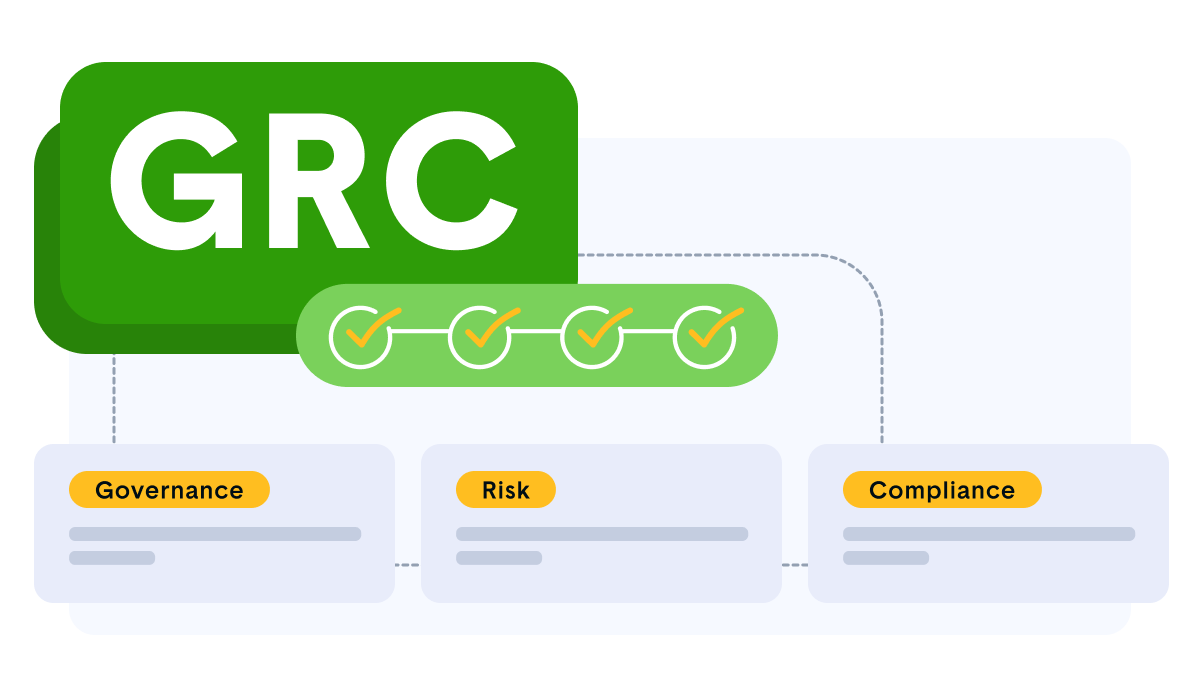

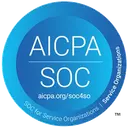


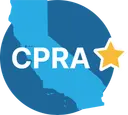




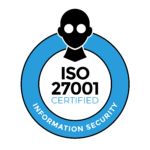

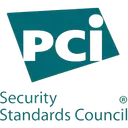
.png)